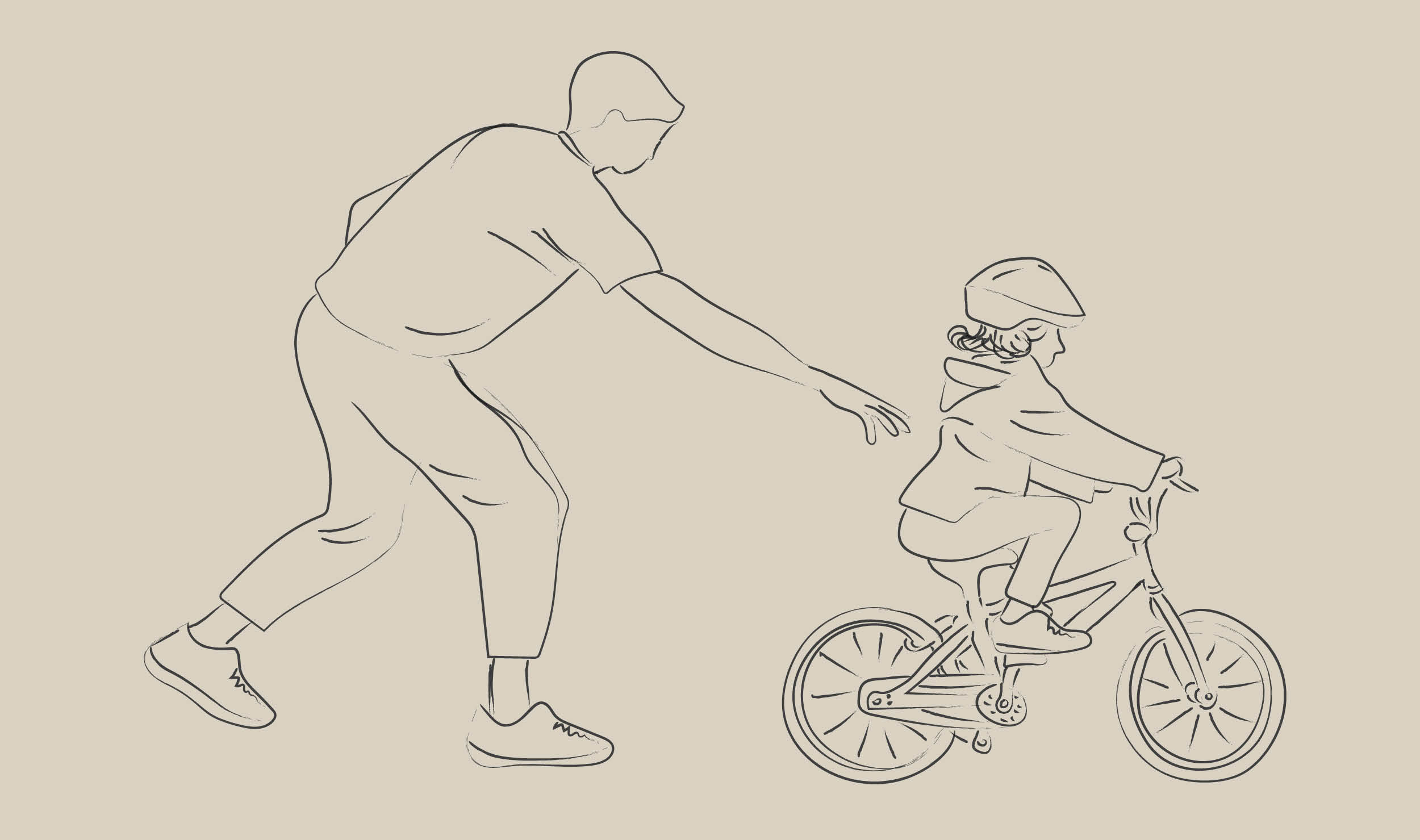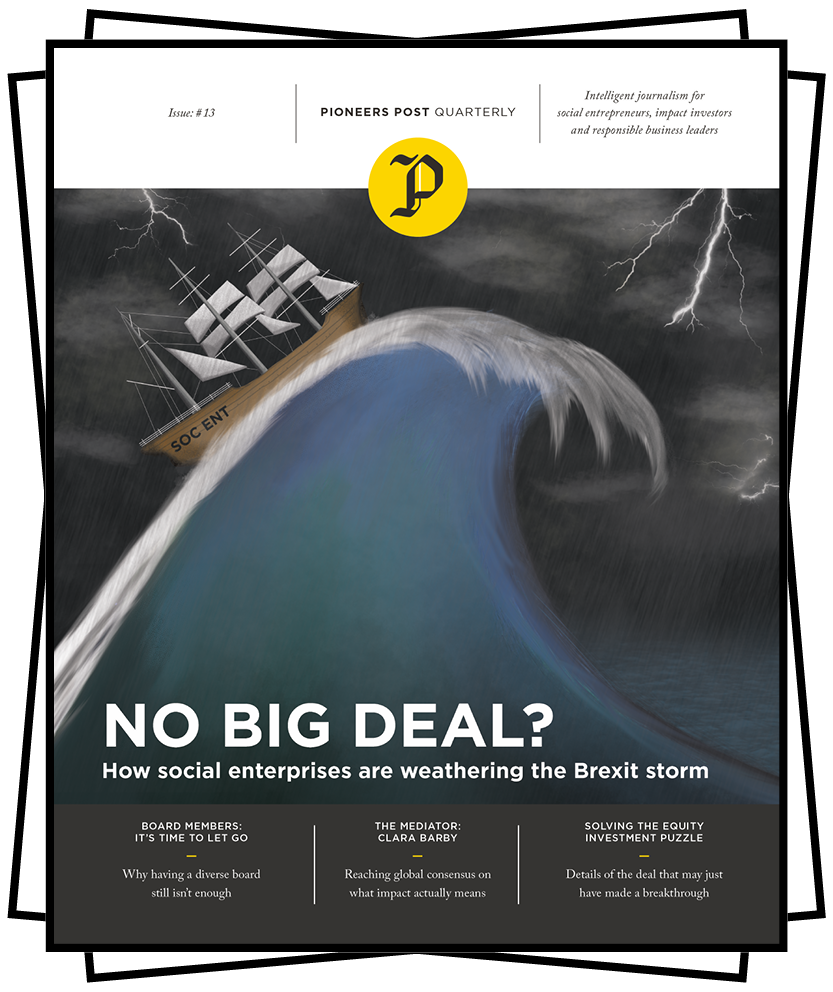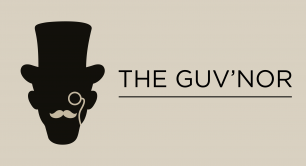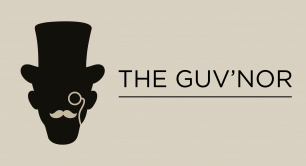The Guv'nor: Board members, it's time to let go
If we want approaches to governance that help us act boldly with a focus on mission and impact, we need to look beyond the board much more systematically and radically. That means we don't just need diverse boards, we need permeable governance. The fourth instalment from our columnist Bob Thust
How can a group of volunteers, very often distant from the day to day, lacking in diversity and with extremely limited amounts of time, ever hope to lead effectively on all these areas?
“The board thinks it’s leading on strategy, but in reality we’re leading the process and the options they choose from, so it’s little more than a formality with some tweaking around the edges,” said one large charity CEO I spoke to recently.

My experience is that most boards get fed a story the management want them to hear. This isn’t some conspiracy, it’s just that senior management teams are so much closer to day to day. Boards have a role to play in strategy e.g. by providing outside perspective, but to pretend they might be in the best position to direct that strategy is often fallacy. Indeed, the board members are rarely best placed to scrutinise management either – partners, funders, beneficiaries, service users and the general public are usually closer. We just don’t often put much energy into listening to those views – or ensuring what they say ‘bites’ (or to put it another way, these voices are all too easily ignored).
“There’s a mistaken view within civil society that governance is about the board. It’s too often seen as a place, rather than a process – governance involves everyone within and around the organisation,”says Julia Unwin CBE, former CEO of the Joseph Rowntree Foundation and chair of the independent inquiry into the Future of Civil Society.
If we want approaches to governance that help us act boldly with a focus on mission and impact, rather than act conservatively with a focus on self-preservation, we need to look beyond the board much more systematically and radically.
For example, in 2011 Mayday Trust carried out an inquiry with over 100 individuals into the support received by people experiencing homelessness, entitled ‘Wisdom from the street’. Reflecting on challenging findings, further academic research was commissioned before they embarked on an 18-month period of co-production with people working and living with MayDay. What emerged was an entirely new approach to the support they provide, known as a “Personal Transition Service” centred on building an individual’s assets as a means for them to take control of their own lives. To implement this strategy effectively has required fundamental changes to the structures and systems within the organisation – for example, HR had to adapt new ways of recruiting and training staff; finance needed to develop the right systems to cope with costing individual interventions; data capture systems had to change to reflect the methodology behind asset based data capture.
“When we found a way to really listen to and directly involve the collective voices of people going through tough times, it transformed governance, it transformed how we set our strategic goals and direction at Mayday,” says Pat McArdle, CEO. “Our ‘Wisdom from the street’ methodology gave us clear insight into the priorities and the questions that we should be asking at a governance level.”
There's a mistaken view within civil society that governance is about the board. It's too often seen as a place, rather than a process - governance involves everyone within and around the organisation
This process of deep listening and response started with the board recognising its limitations, letting go of primary control and understanding that genuine stretch was more likely to come from a process led from outside the organisation than within it.
We can also learn from a growing number of organisations grappling with their role in contributing to impact across interconnected systems. “Research has shown increasingly that discrete, short-term, sport and physical activity programmes don’t deliver long-term benefit,”says Deborah Potts, CEO of Active Gloucestershire, “so over the next few years, Active Gloucestershire will be supporting the most inactive people and communities to identify the changes they want to see. Instead of doing ‘for’ people, we’re going to start doing ‘with’. That means we stop leading from the front and start supporting an emerging movement of people and organisations from behind. That movement is called Gloucestershire Moves.”
This approach has had some significant consequences for the shape of Active Gloucestershire – they are now testing a ‘virtual’ governance structure for Gloucestershire Moves led by a steering group of representatives from across the movement to which the board has formally delegated strategic decision-making. “If we’re genuinely changing our relationship with people, we need to be willing to share any power we have and to let go of the ‘command and control’ model so comfortable for ourselves, our trustees and our funders,” says Deborah. “I have been impressed by the way that staff and board members have stepped up and been willing to embrace the change. In many ways, we’re taking a risk. We’re reinventing Active Gloucestershire entirely.”
These examples demonstrate something well beyond a senior management team collating views from surveys or advisory boards, digesting them, presenting them and framing them for the board to then sign off. They show a genuine distribution of power as a result of a deeper focus on who and how diverse stakeholders are engaged in or leading governance processes. They suggest, for example that an assertion that ‘we need a more diverse board’ is not enough; instead it should be replaced with ‘we need much more diverse voices at all levels inside and outside our organisation’.
|
The 5 ‘S’ governance functions (adapted from a model first put forward by Julia Unwin) It’s not all about the board! What governance roles are carried out by whom – are those roles distributed, complementary and sitting with the right people? And do the structures and processes you have in place support, enable and empower those roles to be carried out effectively? There are lots of models and guides that attempt to define the wider governance functions of a strong organisation committed to its mission. Julia created a 5 ‘S’ model which I find the most useful:
|
Julia Unwin again: “Good governance provides clarity about the connection between different moving parts. It provides guidance about how they interact. It specifies where power is, and who is accountable and for what. It builds deep connection by investing in trust at all levels. It’s always in need of attention. It’s never a destination. But it is how the very different stakeholders in any organisation are able to contribute best. And how their inevitably different priorities can be reconciled.”
This is what I mean when I refer to ‘permeable governance’. For me this places more realistic expectations on boards, creates a more effective challenge to the senior management team, and most importantly leads to a greater focus on mission and impact.
And exploring this needn’t be a daunting task. I’ve worked with many organisations that have found all you need to start is to ask yourselves:
- What are our key governance functions and roles? (see box, above, on the 5 ‘S’ governance functions)
- Who carries out what roles across those functions at the moment?
- Are those roles well distributed, complementary and sitting with the right people?
- Do the structures and processes we have in place support, enable and empower those roles to be carried out effectively?
Answering those questions with real honesty – and regularly returning to them – helps map where power currently sits, opens up a debate on where it might better be placed, and leads to discussions on how to get there step by step. It could just be the beginning of a powerful shift in the way you (and your board) start thinking about what good governance looks like.
 This article first appeared in Pioneers Post Quarterly, issue 13. Read the full issue here – or subscribe now for access.
This article first appeared in Pioneers Post Quarterly, issue 13. Read the full issue here – or subscribe now for access.


